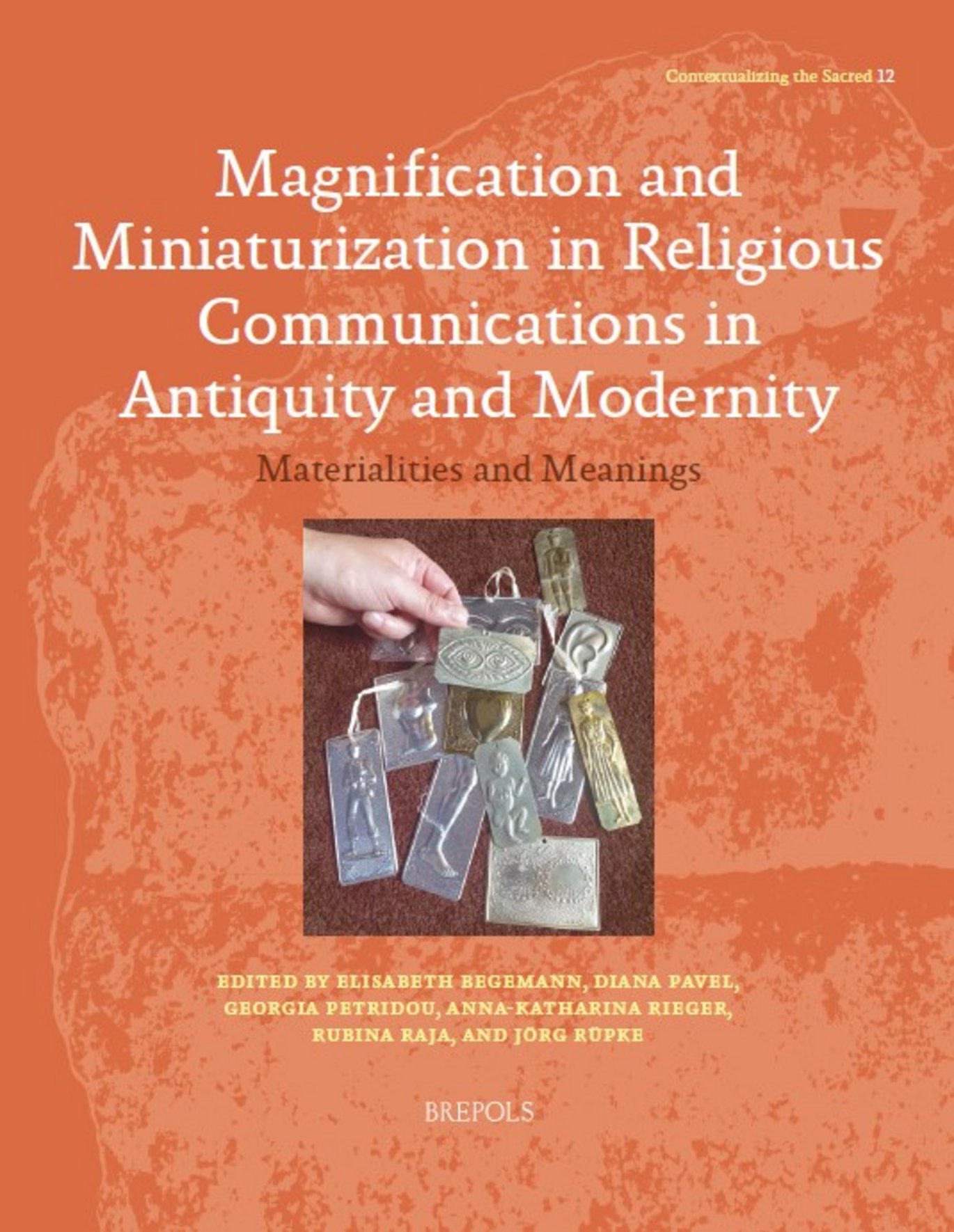Magnification and Miniaturization in Religious Communications in Antiquity and Modernity: Materialities and Meanings
New publication edited by UrbNet’s centre director, Professor Rubina Raja together with Elisabeth Begemann, Diana Pavel, Georgia Petridou, Anna-Katharina Rieger and Jörg Rüpke.

Human agents might not be the measure of all things. Nonetheless, human bodies, and their bodily dimensions, often are, with size impacting on the ways in which we conceive of, interact with, and relate to the world around us. The scaling up or down of features – magnification and miniaturization – is particularly evident in the creation of anthropogenic items intended for use in religious ritual. Here sizing can be employed as a deliberate strategy to encourage shock and awe, admiration, and deterrence among spectators.
Magnification and Miniaturization in Religious Communications in Antiquity and Modernity is edited by UrbNet’s centre director, Professor Rubina Raja together with Elisabeth Begemann (Max-Weber-Kolleg, Universität Erfurt), Diana Pavel (Max-Weber-Kolleg, Universität Erfurt), Georgia Petridou (University of Liverpool), Anna-Katharina Rieger (University of Graz), and Jörg Rüpke (Max-Weber-Kolleg, Universität Erfurt). The volume’s starting point is the concept of ‘materialities and meanings’, and it explores how human perceptions and understanding of magnified and miniaturized forms and structures are shaped and changed, both synchronically and diachronically, by our understanding of the human body and its size, and the impact that this has in our relationship with the wider world in the context of ritual practices. The chapters in the anthology consider a range of questions, from a discussion on the essentials of magnification or miniaturization to an exploration of the impact of such strategies on humans and their wider socio-political ramifications. Together, these chapters contribute to a unique discussion that offers new insights into ‘materialities and meanings’, the creation of items for ritual, and the ways in which they influence human perception and understanding.
The anthology is published by Brepols Publishers in the series Contextualizing the Sacred, which seeks to integrate the study of archaeology, texts, architecture, creating a forum for interdisciplinary and comparative studies of landscapes and domains of evidence that are normally treated separately.
Full reference and chapters by Rubina Raja
Begemann, E., Pavel, D., Petridou, G., Raja, R., Rieger, A.-K., and Rüpke, J. (eds.) (2023). Magnification and Miniaturization in Religious Communications in Antiquity and Modernity: Materialities and Meanings, Contextualizing the Sacred 12, Turnhout: Brepols.
Begemann, E., Pavel, D., Petridou, G., Raja, R., Rieger, A.-K., and Rüpke, J. (2023). “Magnification and Miniaturization in Religious Communications in Antiquity and Modernity: Materialities and Meanings”, in Begemann, E., Pavel, D., Petridou, G., Raja, R., Rieger, A.-K., and Rüpke, J. (eds.) (2023). Magnification and Miniaturization in Religious Communications in Antiquity and Modernity: Materialities and Meanings, Contextualizing the Sacred 12, Turnhout: Brepols, 1-6.
Raja, R. (2023). “Look Closely and You Will See: Banqueting Tesserae from Palmyra and Small-Scale Iconography”, in Begemann, E., Pavel, D., Petridou, G., Raja, R., Rieger, A.-K., and Rüpke, J. (eds.) (2023). Magnification and Miniaturization in Religious Communications in Antiquity and Modernity: Materialities and Meanings, Contextualizing the Sacred 12, Turnhout: Brepols, 9-16.
